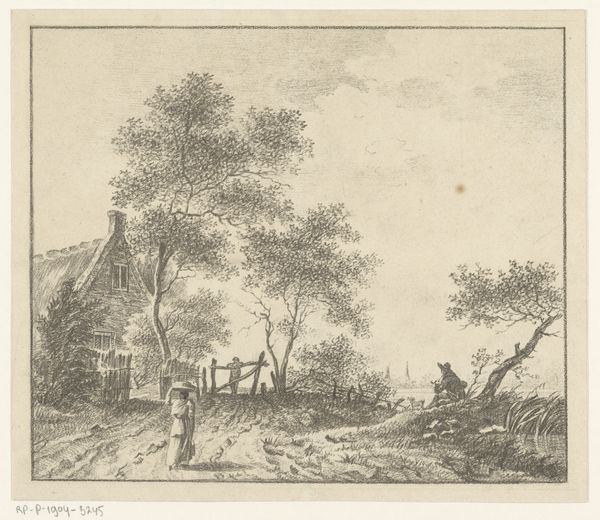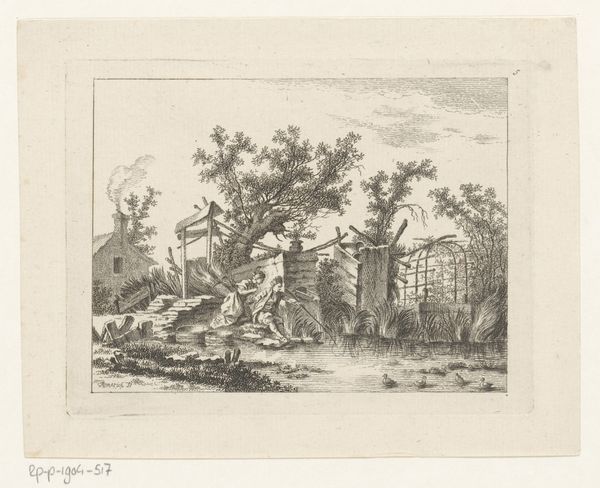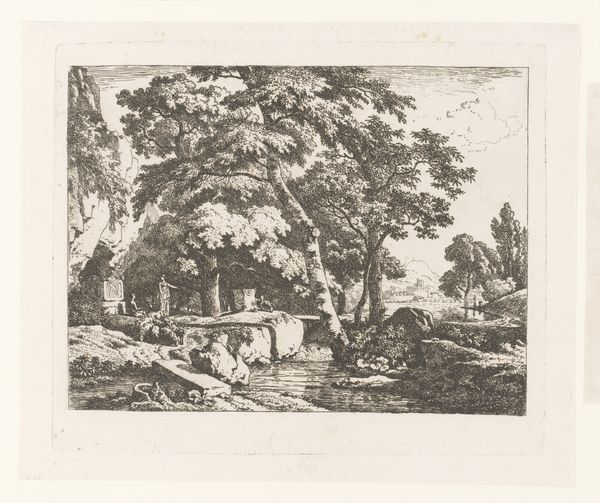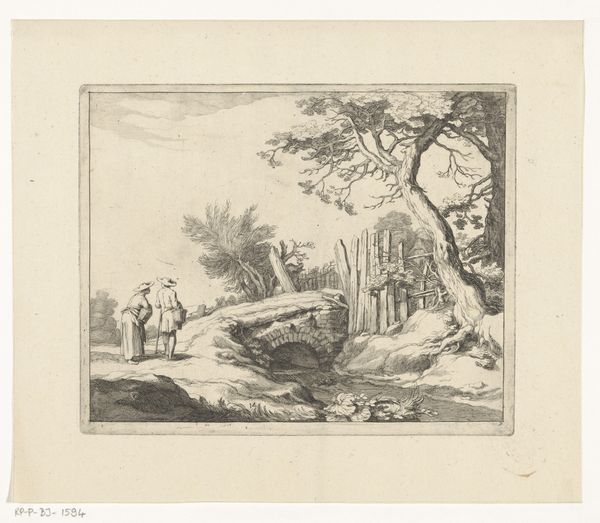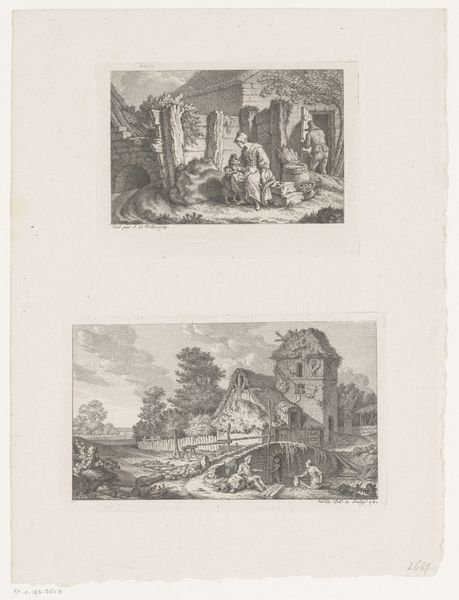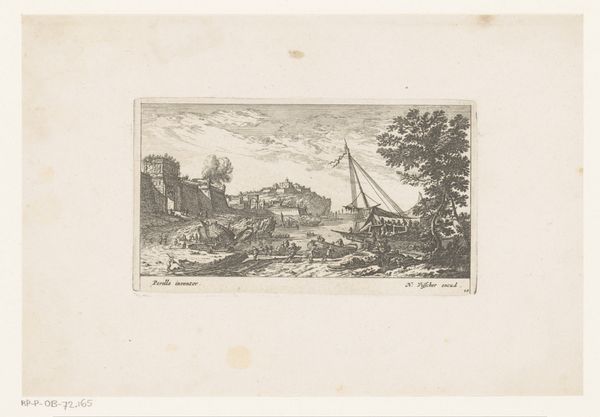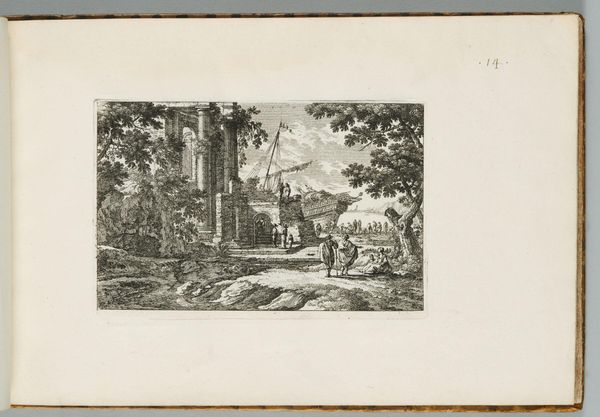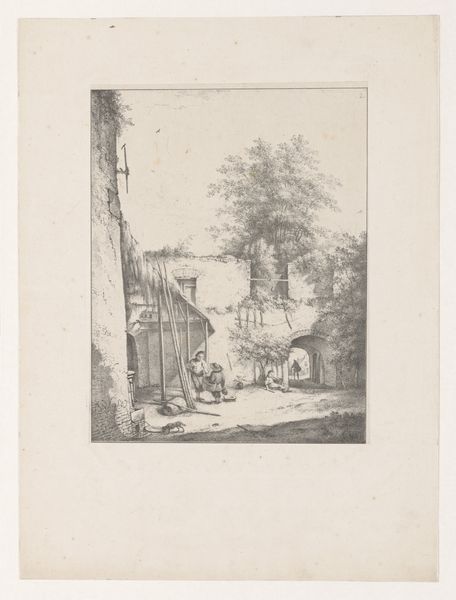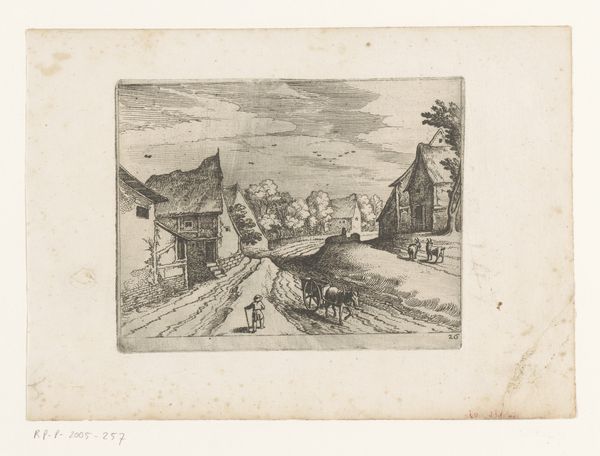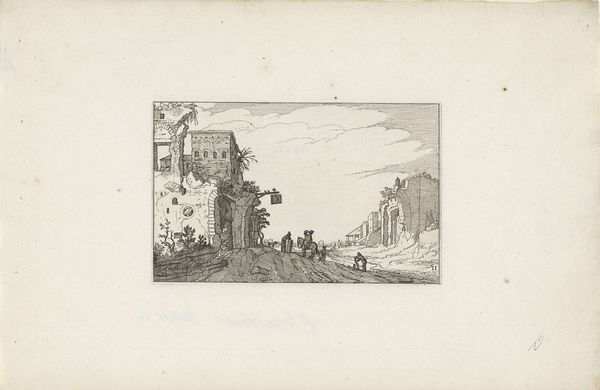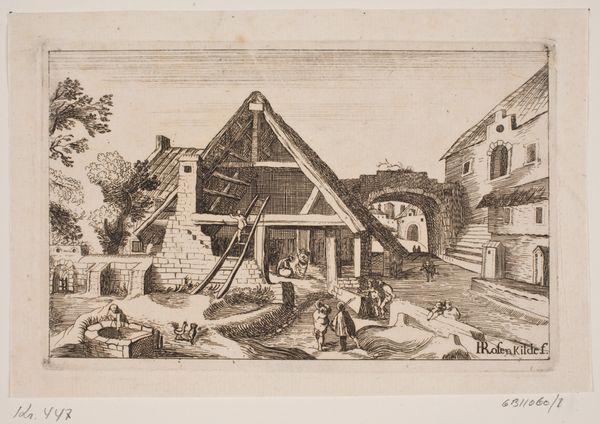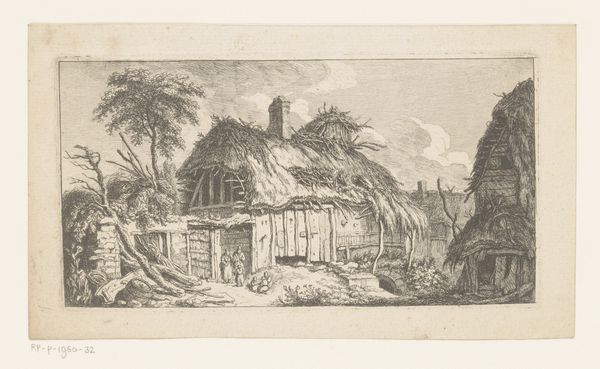
print, etching
#
dutch-golden-age
# print
#
etching
#
old engraving style
#
landscape
#
house
#
history-painting
#
realism
Dimensions: height 166 mm, width 213 mm
Copyright: Rijks Museum: Open Domain
Curator: This etching by Frederick Bloemaert, "Uitzicht met huizen," offers us a glimpse into a moment frozen in time after 1635. Its current home is right here at the Rijksmuseum. Editor: It feels melancholic. The strong lines accentuate the dilapidated structures. The contrast pulls your eye between decay and what seems to be ordinary daily life with the person in the frame. Curator: The interplay of light and shadow enhances that feeling. Observe how Bloemaert uses delicate etching techniques to create tonal gradations that emphasize depth and volume. The texture of the crumbling walls are really emphasized as well as the almost gothic lines in the architecture. Editor: For me, it's less about depth and more about what these decaying buildings mean materially. What kind of labor constructed these buildings? What social conditions led to this disrepair? The etching emphasizes the passage of time and the materiality of existence—nothing is permanent. It really humanizes the context of that period, the economic structures that produced them, the hands that built and then watched them fall apart. Curator: And yet, there’s a formal elegance in the composition that can't be ignored. Bloemaert directs our gaze, almost forcing our perspective and guiding our understanding. How would you interpret the human presence here? Editor: Their posture seems very passive; in modern terms, they seem frozen and lacking the ability to grapple with such large structural issues. I’m curious about what the daily lives were like here. Where did the raw materials come from? This single figure isn’t part of some history painting, nor part of the typical wealth of art from that period, instead we’re invited to meditate on its history, and its process of creation through to the eventual decay and ruin. Curator: A thought-provoking perspective, indeed. By contrasting Bloemaert's delicate touch in the etching with the subject matter, we can grasp a sense of historical commentary woven through both form and content. Editor: Yes, together these layers transform it from mere aesthetic appreciation to a profound dialogue. It forces you to reflect on not just aesthetics but process.
Comments
No comments
Be the first to comment and join the conversation on the ultimate creative platform.

